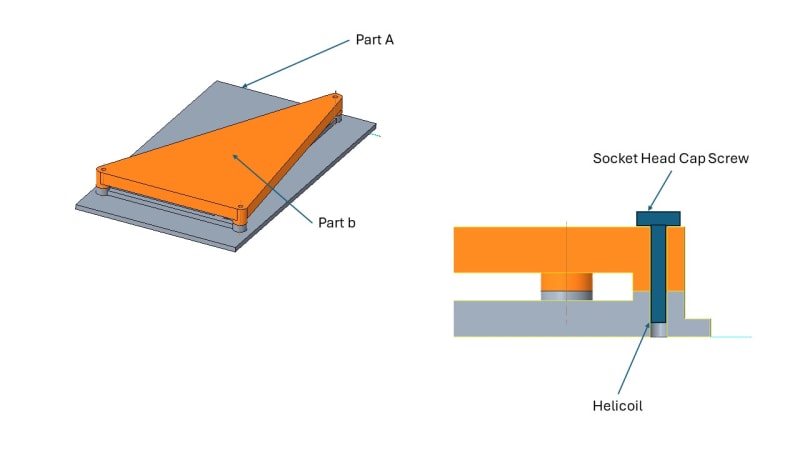I'm going to apologize up front as I am not an ANSYS or an analysis expert by any means but there is some churn within our department about handling joints and I'm hoping someone can educate me.
We have a bolted joint with a fastener, washer, and helicoil. The fastener is a #6 (.138) and the outside diameter of the flanges is .400 currently we are using a beam element with no preload to model this connection and I have some concerns about if this joint is taking into account the overall joint stiffness or not. Looking at contour plots of deformation it appears that there is gapping occurring at this joint which is reality wouldn't happen unless the preload was overcome.
This has lead me to a few questions:
1) Would adding preload to this joint add in the overall joint stiffness?
2) Does ANSYS allow two elements with no contact defined to pass through each other?
3) Is a beam element solely the right way to define this joint or should there be a frictionless contact or joint definition done?
I have ran a small trade study of various options (Beam element, beam element + preload, and beam element + frictionless contact) and they all yield potentially drastically different results. Ultimately we're chasing our tails with stress peaks and I'm trying to figure out if this is reality or and overly conservative model.
We have a bolted joint with a fastener, washer, and helicoil. The fastener is a #6 (.138) and the outside diameter of the flanges is .400 currently we are using a beam element with no preload to model this connection and I have some concerns about if this joint is taking into account the overall joint stiffness or not. Looking at contour plots of deformation it appears that there is gapping occurring at this joint which is reality wouldn't happen unless the preload was overcome.
This has lead me to a few questions:
1) Would adding preload to this joint add in the overall joint stiffness?
2) Does ANSYS allow two elements with no contact defined to pass through each other?
3) Is a beam element solely the right way to define this joint or should there be a frictionless contact or joint definition done?
I have ran a small trade study of various options (Beam element, beam element + preload, and beam element + frictionless contact) and they all yield potentially drastically different results. Ultimately we're chasing our tails with stress peaks and I'm trying to figure out if this is reality or and overly conservative model.

